As an Amazon Associate, I earn from qualifying purchases
To pump air into a car tire, safely remove the valve cap and attach the air pump’s hoses to the valve stems, ensuring a tight fit to prevent air leakage. Then, begin to inflate the tires without hearing any hissing sound, indicating air leakage.
Properly inflated tires are essential for safe and efficient driving. Maintaining the correct air pressure in your car tires not only ensures better fuel efficiency but also increases the lifespan of your tires. Knowing how to pump air into your car tires is a simple yet crucial skill every driver should have.
In this guide, we will provide step-by-step instructions on how to correctly inflate your car tires, whether you are at a gas station or using a hand pump. By following these instructions, you will be able to maintain optimal tire pressure and keep your vehicle running smoothly on the road.
Step 1: Check Tire Pressure
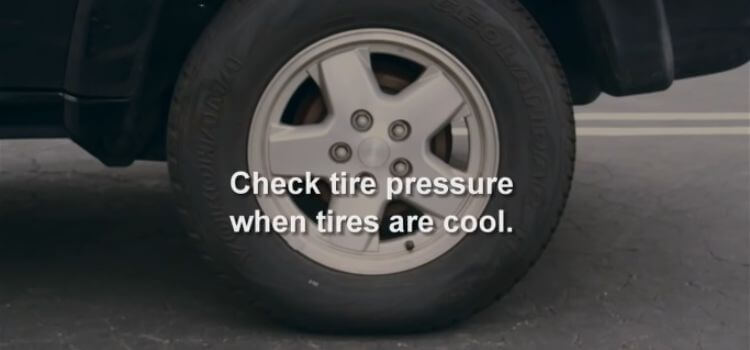
To pump air into a car tire, start by safely removing the valve cap and attaching the air pump’s hoses to the valve stems. Ensure a tight connection without any air leakage. Then, begin inflating the tires to the recommended pressure.
Why Is It Important To Keep Your Tires Properly Inflated?
Keeping your tires properly inflated is crucial for several reasons. First and foremost, it ensures your safety on the road. When your tires are underinflated, it can lead to reduced traction and handling, increasing the risk of accidents. On the other hand, overinflated tires can cause poor vehicle stability, making it difficult to control the car.
Additionally, maintaining the correct tire pressure promotes fuel efficiency. Underinflated tires create more resistance, which in turn requires more energy to propel the car forward. This means your vehicle will consume more fuel, resulting in decreased mileage and increased expenses.
Moreover, properly inflated tires contribute to longer tire life. When tires are underinflated, the outer edges of the tread tend to wear out faster. Overinflated tires, on the other hand, wear out more in the center. By maintaining the correct tire pressure, you can ensure even wear and extend the lifespan of your tires.
What Is The Correct Tire Pressure?
The correct tire pressure can vary depending on the make and model of your car. However, most vehicles have a recommended tire pressure range of 30-35 PSI (pounds per square inch) for passenger cars.
It’s important to note that the front and rear tires may have different recommended pressure levels. This information can usually be found in your vehicle’s owner’s manual or on a sticker located on the inside of the driver’s side door jamb.
How To Find The Recommended Tire Pressure?
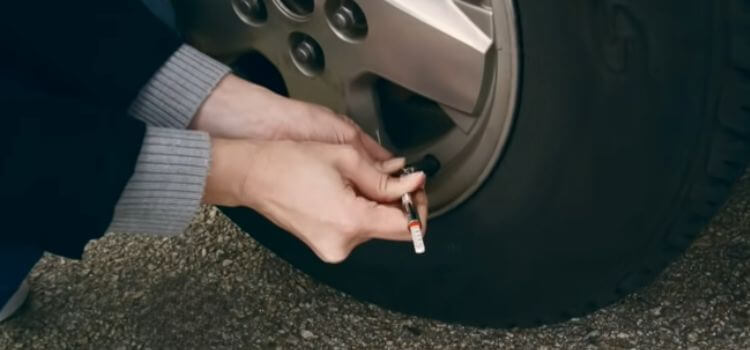
There are several ways to find the recommended tire pressure for your vehicle. The easiest and most accurate method is to refer to your vehicle’s owner’s manual. It should have a section dedicated to tire pressure, listing the recommended PSI for front and rear tires.
If you don’t have access to your owner’s manual, you can also find this information on a sticker located on the inside of the driver’s side door jamb. The sticker will display the recommended tire pressure for the front and rear tires, as well as other important information such as load capacity.
Remember that the recommended tire pressure is specific to your vehicle, so do not rely on the PSI information found on the tire itself, as it may not be the optimal pressure for your car.
Step 2: Prepare For Inflation
To pump air into a car tire, safely remove the valve cap and attach the air pump’s hoses to the valve stems. Make sure to screw the tube tightly to prevent air leakage. Then, begin inflating the tires. Remember to check the recommended tire pressure for your vehicle.
Park Your Car In The Right Place
Before you begin inflating your car tires, it’s essential to park your vehicle in a safe and suitable location. Look for a flat surface away from traffic or any potential hazards. This will ensure stability and prevent accidents during the inflation process.
Remove The Tire Valve Cap
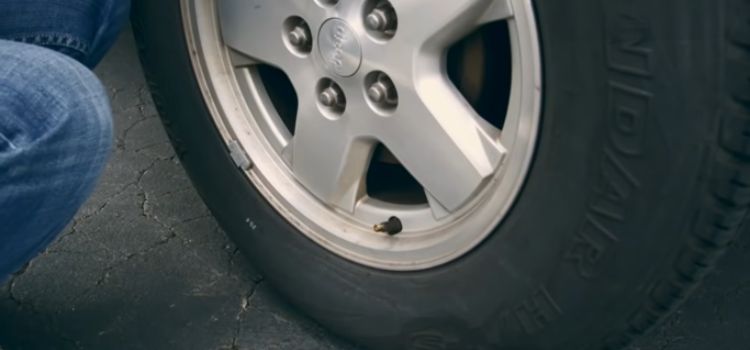
The next step is to remove the tire valve cap. This small cap protects the valve stem from dust and debris. Use your fingers to unscrew the cap counterclockwise and set it aside in a safe place. Be careful not to drop it, as losing the valve cap can lead to dirt or moisture entering the valve stem, causing potential damage.
Place The Compressor Fitting Firmly On The Tire Valve Stem
With the valve cap removed, it’s time to connect the air compressor. Take the compressor fitting and firmly attach it to the tire valve stem. Make sure it is aligned properly and securely fitted to prevent any air leakage during inflation. You should feel a snug connection without any hissing sound, indicating a tight seal.
Remember, maintaining the correct tire pressure is crucial for your safety and vehicle’s performance. By following these simple steps, you can easily prepare for inflating your car tires and ensure a smooth and safe driving experience. Keep reading for the next steps on how to pump air into your car tires.
Step 3: Inflate The Tires
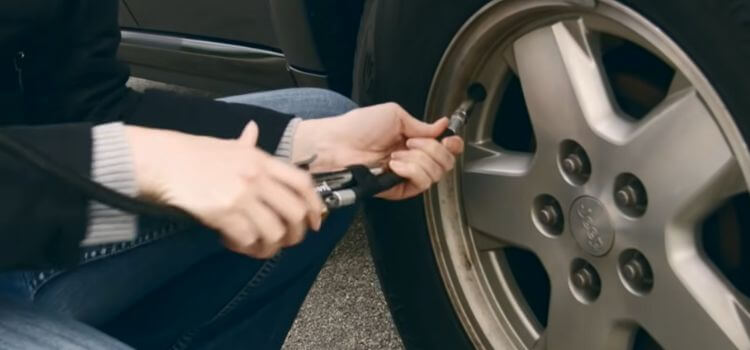
To properly pump air into car tires, start by removing the valve cap and attaching the air pump’s hoses tightly to the valve stems. Make sure there is no air leakage before inflating the tires.
Filling The Tires With Air
To properly inflate your car tires, you have a couple of options – you can either use a hand pump or utilize the air pump available at gas stations. Let’s explore both methods in detail.
Can You Hand Pump Air Into A Car Tire?
Yes, you can use a bike pump or a similar hand pump to inflate your car tire. However, keep in mind that it might require some effort and patience. While a hand pump can handle the necessary pressure, the larger volume of air needed to inflate a car tire might take a while. So, if you’re in a rush or have multiple tires to inflate, it might be more efficient to use an air pump at a gas station.
How Do You Pump Air Into A Tire At A Gas Station?
When using an air pump at a gas station, follow these simple steps:
- Safely remove the valve cap from each tire.
- Attach the air pump’s hose to the valve stem of the tire.
- Tightly screw the tube onto the valve stem to prevent any air leakage. Ensure you don’t hear any hissing sound, as it indicates air escaping from the tire.
- Start the air pump and begin inflating the tire.
- Keep an eye on the pressure gauge to ensure you don’t overinflate the tire.
- Once you’ve reached the desired pressure level, typically indicated by the manufacturer’s recommendations, stop inflating.
- Detach the air pump’s hose from the valve stem and securely replace the valve cap.
- Repeat the process for each tire until all are properly inflated.
Remember, regular tire pressure checks and maintenance are crucial for safer driving and better fuel efficiency. By properly inflating your car tires, you can enhance your driving experience and ensure optimal performance on the road.
Step 4: Finishing Up
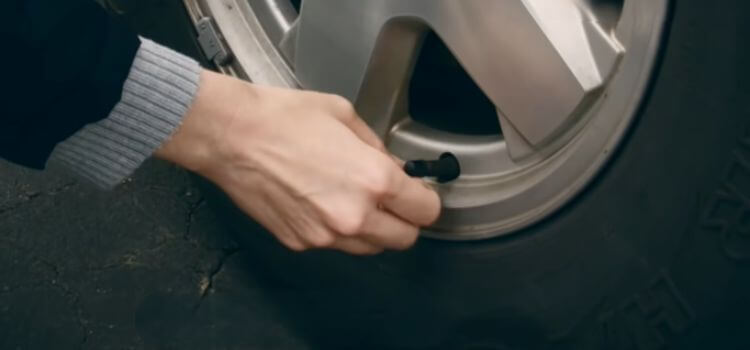
To pump air into a car tire, safely remove the valve cap and attach the air pump’s hoses to the valve stems. Make sure to screw the tube tightly to prevent air leakage. Then, start inflating the tires, ensuring no air is leaking.
Once you have successfully inflated your car tires to the recommended pressure, it’s important to take a few final steps to ensure everything is secure and ready for the road. Here are two important steps to complete in order to finish up this process:
Replace The Valve Cap
After removing the air pump’s hose from the valve stem, it’s crucial to replace the valve cap. The valve cap protects the valve from debris, moisture, and damage. It also helps maintain the air pressure in your tires.
Be sure to screw the valve cap back on tightly, ensuring a proper seal. This will prevent any air leakage and maintain the tire’s pressure. Remember, a loose or missing valve cap can lead to pressure loss over time.
Note: It’s a good idea to periodically check the valve cap to make sure it is secure and in good condition.
Frequently Asked Questions On How To Pump Air Into Car Tire
How Do You Pump Air Into A Tire At A Gas Station?
To pump air into a tire at a gas station, remove the valve cap and attach the air pump’s hoses to the valve stems. Screw the tube tightly to avoid air leakage. Inflate the tires without hearing any hissing sounds, indicating air leakage.
Can You Hand Pump Air Into A Car Tire?
Yes, you can hand pump air into a car tire using a bike pump. However, it may take longer due to the larger volume of air needed. Make sure to tightly attach the pump’s hoses to the valve stems to prevent air leakage.
Check for any hissing sounds indicating air leakage.
How Do I Know How Much Air To Put In My Tires?
To know how much air to put in your tires, check the recommended tire pressure. This information is usually found on a sticker inside the driver’s door or in the owner’s manual. The tire pressure is measured in pounds per square inch (psi).
Conclusion
To properly pump air into your car tire, start by removing the valve cap and securely attaching the air pump’s hoses to the valve stems. Make sure there are no hissing sounds indicating air leakage. Then, proceed to inflate the tires.
Remember to check the recommended tire pressure for your vehicle, which can usually be found on a sticker inside the driver’s door or in the owner’s manual. By following these steps, you can ensure your tires are properly inflated for a smoother and safer ride.
As an Amazon Associate, I earn from qualifying purchases
